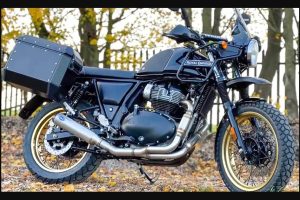Project Nova: It sounds like the title of a failed sci-fi television pilot. In reality, it was something far more interesting—a Harley-Davidson development program in the early 1980s, with liquid-cooled V4 engines and other advanced technology.
These days, everyone’s dumping on Harley-Davidson, saying the company’s in trouble because it never innovated, it always catered to the wrong people, blah blah blah. There’s some truth behind this talk; Harley-Davidson’s attachment to air-cooled, overweight V-twins has proved a bad long-term plan. However, it’snottrue to say the company hasn’t tried different things. Project Nova was a good example.
This video shows off a couple of Project Nova prototypes—an old school sport bike, built along the lines of the early 1980s, and a touring machine. Both bikes sport liquid-cooled V4 engines, with the radiator hidden away under the seat. The fuel tank is in the middle of the bike—note the filler cap at the back of each machine, on the right side. So what’s in place of the conventional gas tank? Harley-Davidson took a cue from the Honda Gold Wing, and used that space to hide away electronics and other gadgetry.
Harley-Davidson was developing the Evolution platform at the same time, and ultimately, that was the future for the company. H-D shelved Project Nova; some people blame it on overly conservative management, others say the customer base didn’t want it and some people say it came down to financing. Whatever the case, the Evolution engines were popular and reliable, and set the company’s course for decades.
Some of Project Nova’s lessons lived on, though. Watch the video above, and you’ll see a perimeter brake design that Buell used later, and bodywork that Harley-Davidson later put on its FXRT tourer. The team-up with Porsche didn’t result in a V4 engine, but several years later, Porsche and Harley-Davidson collaborated on the liquid-cooled Revolution motor, used in the V-Rod line.






